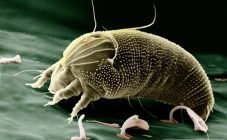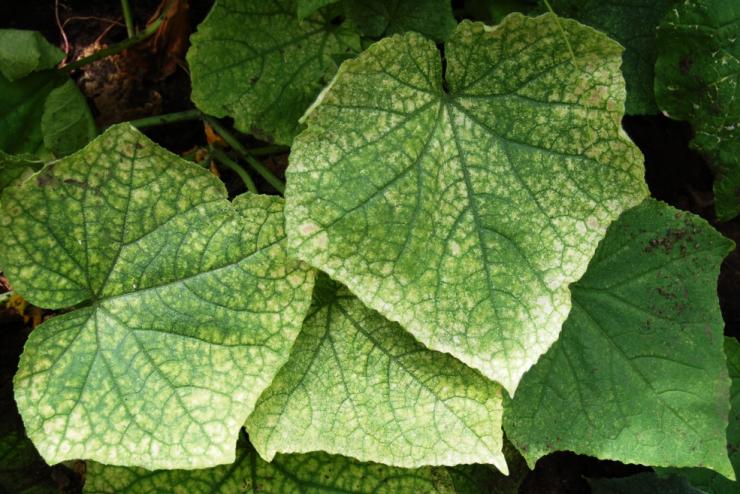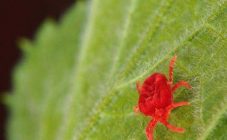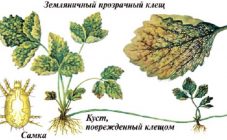Content:
Chicken mite not only poses a threat to poultry, but also brings a lot of inconvenience to poultry farmers and farmers who raise chickens. The first alarming sign of the defeat of a chicken by a dangerous ectoparasite is a decrease in productivity, and its appearance also deteriorates.
In young animals of any broiler breed and common laying hens, when infected with a chicken mite, growth slows down, and weight gain occurs very slowly, which cannot be said about their healthy peers.
General rules for caring for chickens at home
To prevent the appearance of an unwanted parasite, it is recommended to follow a few simple rules when raising chickens at home, namely:
- regularly clean the room in which the bird is located;
- to prevent contact of chickens with wild birds, as well as the possible appearance of rodents;
- provide birds with sand baths;
- there should be good ventilation and moderate humidity in the chicken coop;
- prevent chickens from crowding in cages.
Identification of feather and other types of mites
Ticks in chickens are represented by an extensive group of parasites. They feed on blood, as well as skin cells that have exfoliated. External resemble an ordinary insect, like a spider, they have eight legs.
Certain species of ticks can parasitize birds, and some live in a chicken coop. They are very difficult to spot as they hide under perches, in crevices in walls, or bedding in nests. The most dangerous varieties of this parasite:
- The red tick is the most common species. It can be easily detected when examining broilers, and the favorite places for parasites are the neck, anus or the areas under the wings. If the tick is still hungry, its color will be dominated by a yellow tint, and after it is saturated with blood - purple or red.
- A feather mite that prefers to breed in warm places, such as the neck and under the wings. With an advanced form of infection, parasites can be found in the nostrils and in the eye area. If the bird is infected, it will rapidly lose feathers and weight, and egg production will be reduced to almost zero.
- Small scabies mite, often provoking a disease such as knemidocoptosis. Parasites multiply under the scales of the paws, in rare cases - in the beak. At the initial stage of the disease, the tick does not manifest itself in any way, only its active reproduction occurs. After 3 months after the chicken was infected, the skin on the legs is covered with tubercles, and the phalanges are deformed.
What does a chicken mite look like?
Their body is oval and reddish in color, sometimes white spots can be seen on the back. Even adults are very small in size, so it is extremely difficult to spot parasites with the naked eye.
Unlike males, females are larger in size.Ticks parasitize on the body of the chicken on their eight legs, moving very quickly. The proboscis is located on the head of the tick. The eggs laid by females are oval in shape, and the laid larva has 6 legs. Larvae are unable to move and feed, and adults do not fly or jump, moving exclusively on their paws.
At the end of the day, the larvae enter the next stage of development, which is called protonymph. They become transparent and begin to actively feed on the blood of birds. The number of deposited tick-borne larvae directly depends on how the female feeds. In the daytime, ticks hide, using crevices, cracks and debris for these purposes, and chickens are attacked at night.
The time of "eating" in ticks can be delayed from several minutes to several hours. With saturation, the body weight of the parasite can increase by more than 10 times.
Feather mite in chickens: treatment
If a tick is found in a broiler, you can fight it with the help of folk and traditional means. An integrated approach is highly effective. It is recommended to use as traditional means:
- Aerosol Eco-fleece, which is an effective insecticide.
- therapeutic and prophylactic agent Ivermerk, which is produced in containers of 0.5 liters. Dilute the product in water, taking into account the live weight of the chicken (400 μg / 1 kg), and treat the livestock following the instructions.
- pyrethrium is a powder made from chamomile flowers. With this powder, you need to process the feathers of the chickens (for 1 individual 15 g of the product), and repeat after two weeks.
If the bird has open wounds on the body, they should be lubricated using available healing agents. To combat parasites, vegetable oil is often used as folk methods, with which the areas affected by ticks are lubricated. If the parasites have dug into the legs, you can get rid of them by treating the limbs with birch tar.
Chicken mite in humans, how to get rid
If a chicken mite has been found on the human body, it will resemble the shape of a pellet of mud that adheres to the skin. The parasite can often be seen on the legs. Careless brushing of the "lump" leaves barely noticeable bite marks, which can lead to the development of dermatitis and an allergic reaction. Precautions should be taken with respect to not only birds, but also the people who breed them. When caring for broilers and layers, it is necessary to wear special protective clothing, consisting of heavy trousers and rubber boots. It is strongly not recommended to neglect the overalls even if you need to enter the pen for a short time.
If you are wondering how to get rid of ticks in a hen house and on chickens, it is worth noting that it is much easier to prevent the appearance of a chicken tick than to remove it, because getting rid of parasites requires considerable effort, time and money. Experienced poultry farmers advise using such effective and simple preventive methods as regular examination of chickens, as well as periodic cleaning of the house and the premises in which the young are located.














